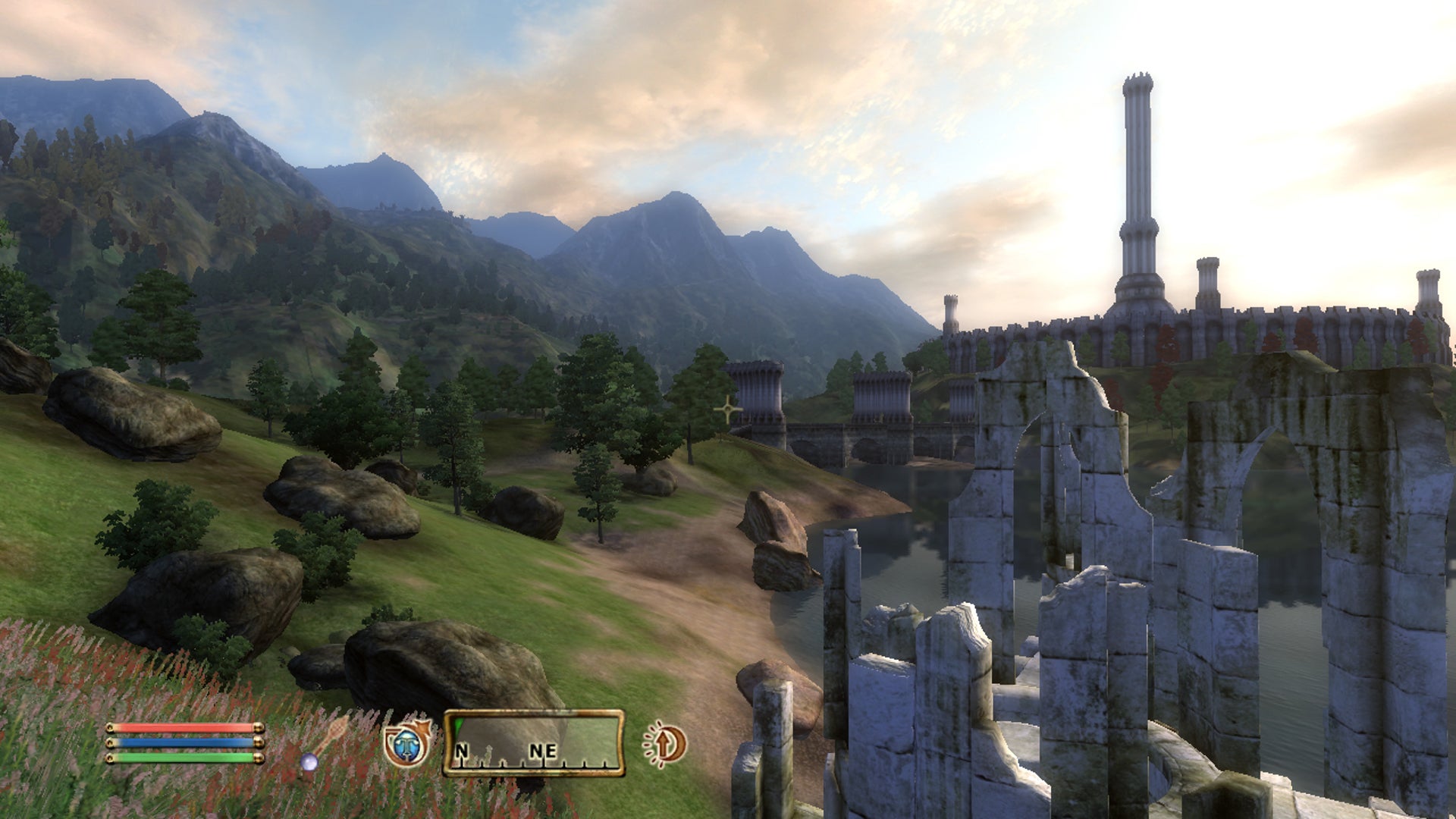What makes The Elder Scrolls so captivating? Is it the wacky-but-epic fantasy setting? Is it the buggy nature of of all the games set in that world? Or does it just come down to the unique mix of flexible RPG systems and immersive sim DNA? Most veterans will argue it’s the latter. But we can’t reduce the series’ success to a perfectly calculated fusion of genres, because the games themselves are anything but rigid. Skyrim undeniably set a new bar for open-world games back in 2011. That’s why everyone is still going on about it now. It got popular mostly because it implementated Radiant AI alongside the series’ staple procedural quests and traditional, hand-crafted storylines. And it had that Bethesda Game Studios patented world design, with those unforgettable morsels of bite-sized lore, too. Meanwhile, The Elder Scrolls Online has become bigger than anyone anticipated by following the philosophy that made Oblivion and Skyrim earth-shattering hits, and marketing for that game constantly highlights what every TES fan knows to be true: it’s about our individual stories, and how we experience each piece of content in radically different ways. But The Elder Scrolls’ biggest success has always been making the world of Tamriel feel like home, instead of just like a 50-hour vacation. That’s how I felt when I first stepped into Tamriel with Oblivion, anyway – it’s an experience that was (and still is) special, and that isn’t just nostalgia speaking, either. Bear with me. I keep returning to Oblivion because it’s remarkably charming in a really innocent way. The (heavily) Medieval European setting of Cyrodiil is vanilla enough to feel bucolic and homely without trying too hard; the magic system is broken as hell; the “revolutionary” AI of the NPCs is both lively and hilariously robotic… the list goes on and on, but it all comes down to Bethesda making the right game at the right time, but without all the right tech it needed to realise its ambitions. If we look at Skyrim – or even 2008’s Fallout 3 – it quickly becomes clear that Bethesda Game Studios learned a lot from going all-in with Oblivion right at the beginning of the 360/PS3 generation. One day, in 2004, you’re playing GTA: San Andreas, and less than two years later Todd Howard and his team come out with a huge sandbox filled with houses and caves you can visit, NPCs with (somewhat) realistic lives, and physics that you had only seen in a handful of shooters before. It was kind of bananas, but also far from polished. And that combo rocked. For all the seriousness Oblivion demonstrates during its starting hour – including Sir Patrick Stewart in a limited (but key) role – the experience promptly goes off the rails once you step out of the Imperial sewers. Oversized crabs (disgusting creatures) are looking for brawls 24/7. Bandits sit around the roads doing nothing besides bullying you, and eventually wear nothing but high-level gear for some reason. A dude who loves his dogs randomly breaks down and starts punching those same dogs until he’s put down by the town guards. You accidentally kill a farmer who got in the way of a sword slash and next thing you know, you’re part of a secret cult of assassins. It’s great! This is only a small selection of the goofy, weird stuff that will happen in 100s of hours of playing. And these wacky, Pratchett-esque moments wouldn’t be possible without some of the game’s systems being fundamentally broken. However, I also believe Bethesda kind-of went for this offbeat vibe on purpose; Morrowind already was plenty weird (and found great success in spite of not being a mainstream hit), so it made sense to keep around some of its kookiness. Amongst all the super important quests about saving the world (or something), the third Elder Scrolls dared to ask (and answer) questions like ‘can a mage could come up with a totally unsafe spell to jump ludicrous distances?’ You find a dude splattered on a road and a book next to him. You use said book and jump like the Hulk in Ang Lee’s 2003 film. The point? I don’t know, maybe that people in fantasy worlds would do all kinds of weird shit. Thankfully, Oblivion totally doubled down on that type of meaningless-but-memorable content that made its world more colorful and unpredictable. It’s hard to jot down a list of the top stories and questlines in the game, because there are so many to choose from (“Whodunit?” is the best one, by the way). And that’s without even getting into the Shivering Isles expansion, which condenses all the nonsense of Oblivion into a big ball of lore and high-stakes adventuring. Much like its gameplay and systems, Skyrim’s narrative efforts generally tried to be epic, robust and all-around reliable – that largely explains why it resonated with so many players and still works like a charm. It often allowed itself to be a silly game, but for the most part it was grittier and more serious. The perfect fit for the Game of Thrones era. On the other hand, Oblivion fully allowed us to play as impossible abominations: It may be ugly and awkward-looking by today’s standards, but Oblivion was a stunning display of what 360 was capable of at the time – and a precursor to the highly-detailed, sprawling worlds to come. Even with its cartoony art style, the fourth Elder Scrolls was a looker – minus those unfortunate NPC faces – and brought countless PCs to their knees for years; graphical mods only made performance and stability shakier. Skyrim is the better game, sure. There’s no way around that. But Oblivion remains uniquely magical and odd. It was a curious bridge between two very different eras of The Elder Scrolls, and open-world games in general. ZeniMax seems to be fully aware of its importance, celebrating the franchise as a whole with The Elder Scrolls Online, and so I hope Bethesda Game Studios takes more than a few pages from that book in order to avoid inadvertently making a grimdark ‘Skyrim 2’ whenever the hell The Elder Scrolls 6 comes out. Leave all that to The Witcher. Tamriel deserves a lighter heart.



